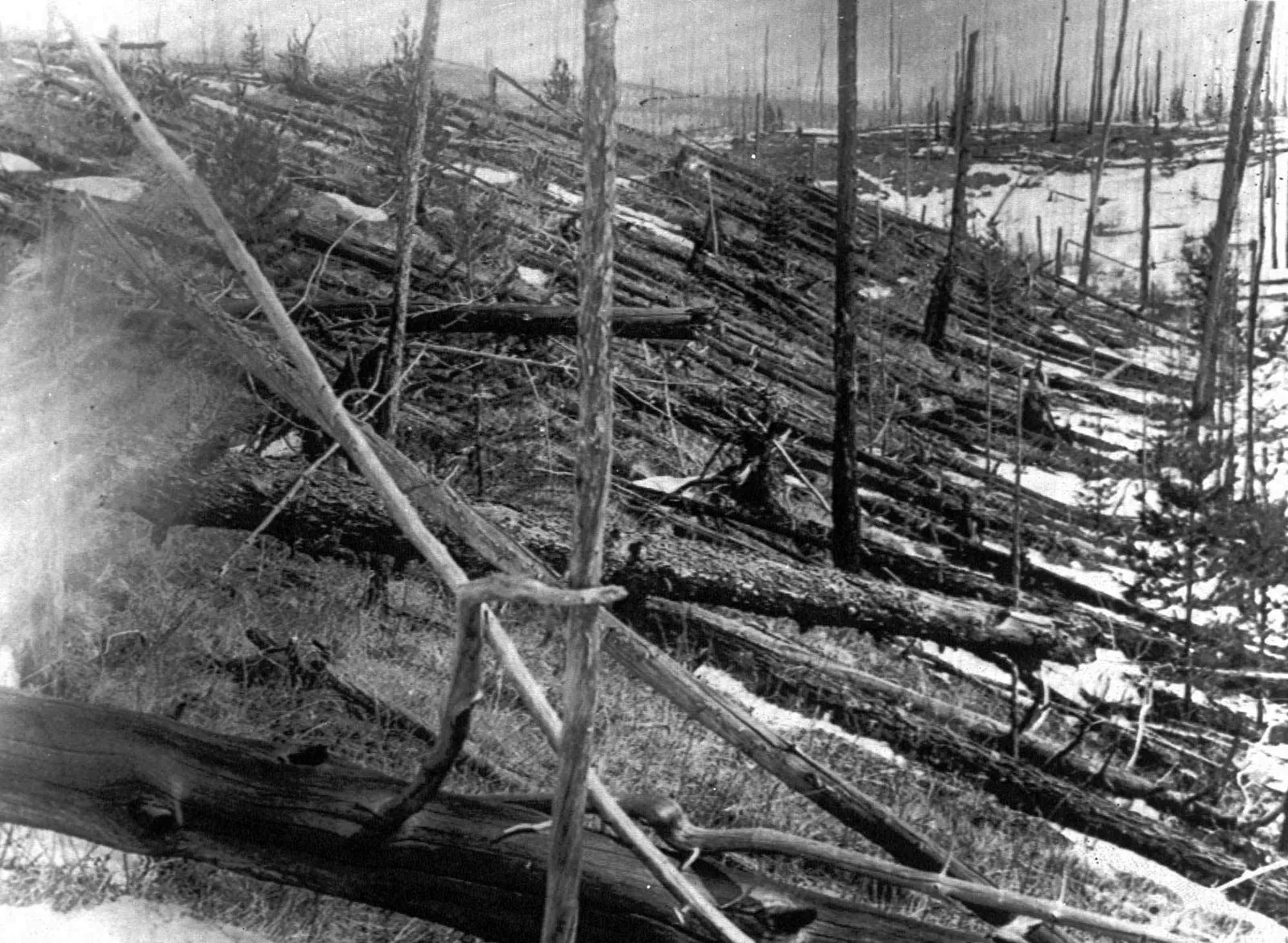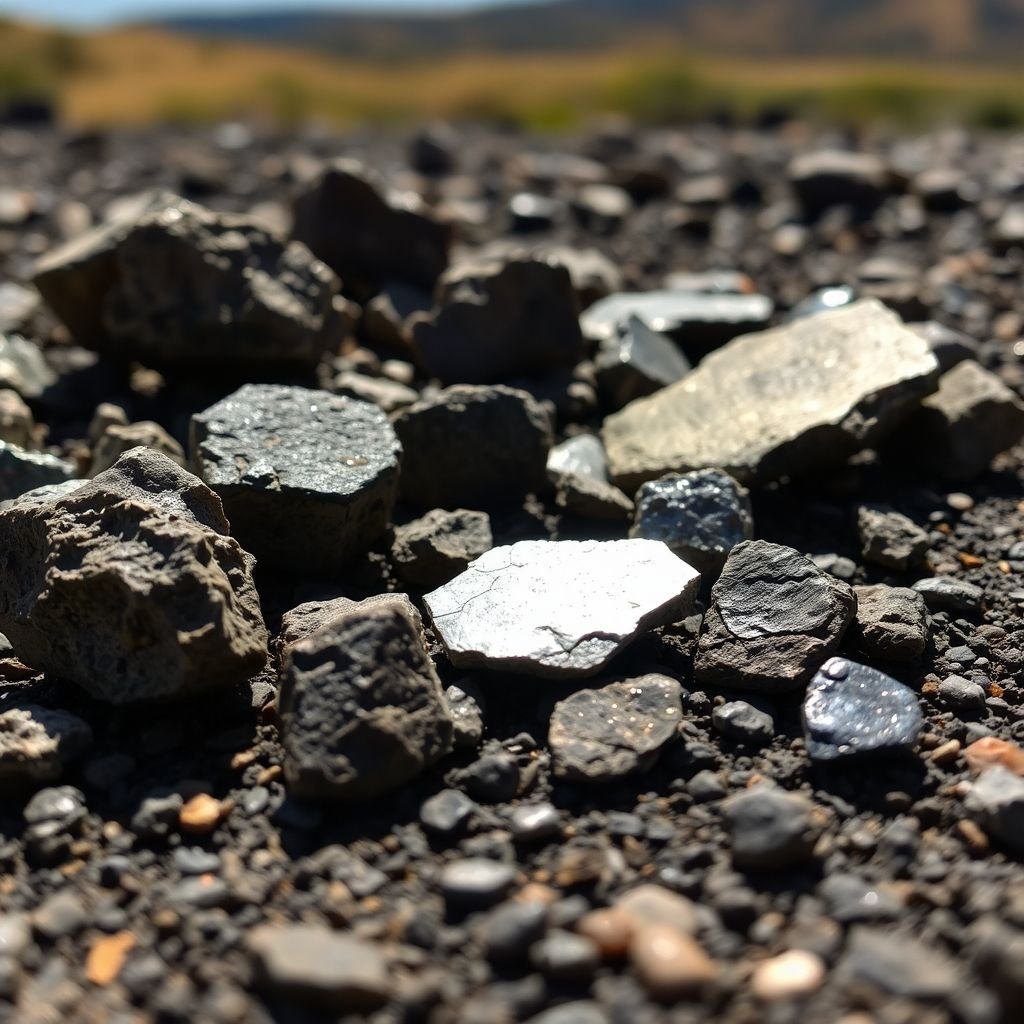The Tunguska Event, which occurred in 1908, is often regarded as the most significant meteor explosion in recorded history. This mysterious incident flattened vast areas of forest in Siberia and left scientists scratching their heads for decades. What exactly happened that fateful day? In this article, we’ll explore the background of the Tunguska Event, its environmental impact, the various theories regarding its cause, and its lasting implications.
Key Takeaways
- The Tunguska Event occurred on June 30, 1908, and is the largest meteor explosion recorded in history.
- Eyewitness accounts describe a massive fireball and a shockwave that flattened trees over 2,000 square kilometres.
- Various theories suggest the explosion was caused by an asteroid or comet, with some even linking it to Nikola Tesla’s experiments.
- The event had significant ecological impacts, destroying vast forest areas and affecting local wildlife.
- Tunguska serves as a reminder of the potential dangers posed by near-Earth objects and the importance of planetary defence research.
Understanding The Tunguska Event
The Tunguska event remains one of the most significant and perplexing cosmic mysteries of the 20th century. Occurring on the morning of June 30, 1908, a massive explosion flattened approximately 80 million trees across an area of 2,000 square kilometres near the Podkamennaya Tunguska River in Siberia, Russia. What makes this event so intriguing is the lack of an impact crater, leading to numerous theories about its cause. Let’s explore the historical context, eyewitness accounts, and scientific investigations surrounding this cataclysmic event.
Historical Context
The early 20th century was a time of limited scientific resources in remote Siberia. News of the Tunguska event took days to reach the outside world, and proper scientific expeditions weren’t launched until over a decade later. This delay meant that initial investigations were hampered by the lack of immediate data and the challenges of accessing the remote and rugged terrain. The Russian Empire was also facing internal turmoil, which further complicated the response. The event occurred during a period of significant social and political change, which impacted the speed and scope of the initial research efforts. This potential threat highlights the importance of planetary defence.
Eyewitness Accounts
Eyewitness accounts provide some of the most compelling, if varied, evidence of what happened that day. Local Evenki people and Russian settlers described seeing a bright light in the sky, followed by a deafening explosion and intense heat. Some reported feeling the ground shake and being knocked off their feet. These accounts, while subjective, offer valuable insights into the scale and nature of the event. However, the remoteness of the area and the limited communication methods of the time meant that these stories were often fragmented and difficult to verify. Some common themes emerged:
- A brilliant flash of light.
- A powerful shockwave.
- Widespread destruction of the forest.
Scientific Investigations
Scientific investigations into the Tunguska event have been ongoing for over a century. Early expeditions, such as the one led by Leonid Kulik in the 1920s, aimed to find the impact crater. The absence of a crater led to the hypothesis of an airburst, where a meteoroid or comet exploded in the atmosphere before reaching the ground. Modern research has involved analysing soil samples, tree rings, and other data to understand the energy released and the composition of the object. Despite these efforts, the exact nature of the Tunguska object remains a subject of debate.
The lack of definitive evidence has fuelled speculation and alternative theories, ranging from cometary fragments to more exotic explanations. The scientific community continues to explore various possibilities, employing advanced technologies and interdisciplinary approaches to unravel the mysteries of Tunguska.
The Explosion’s Impact on the Environment
The Tunguska event wasn’t just a flash in the sky; it had a profound and lasting impact on the Siberian landscape. The immediate aftermath was devastating, but the long-term ecological consequences are still being studied today. It’s a stark reminder of the power of nature and the potential for even seemingly remote events to cause widespread change.
Destruction of Forests
The most obvious impact was the flattening of the forest. Around 80 million trees over an area of 2,000 square kilometres were knocked down in a radial pattern, with the epicentre showing trees standing upright but stripped of their branches. This ‘butterfly’ pattern is a classic signature of an airburst explosion. The force of the blast was so intense that it uprooted trees, snapped trunks, and scattered debris for miles around. Imagine the sheer scale of that destruction – a truly apocalyptic scene. The radiation energy released was immense.
Ecological Consequences
Beyond the immediate destruction, the Tunguska event triggered a cascade of ecological changes. The destruction of the forest canopy led to increased sunlight reaching the forest floor, altering the microclimate and favouring different plant species. Animal populations were also affected, with some species declining due to habitat loss and others thriving in the newly opened areas. The soil composition was altered, and the nutrient cycle disrupted. It’s a complex web of interconnected effects that scientists are still trying to fully understand.
Long-term Effects
The forest has been slowly regenerating since 1908, but the area still bears the scars of the Tunguska event. The species composition of the forest is different from what it was before, with a greater proportion of pioneer species like birch and aspen. The soil remains disturbed in many areas, and the effects of the explosion can still be seen in the growth patterns of the trees. The event serves as a long-term natural experiment, allowing scientists to study the processes of ecological succession and the resilience of ecosystems. The Stephen E. Franklin added some interesting facts.
The Tunguska event offers a unique opportunity to study the long-term effects of a large-scale disturbance on a boreal forest ecosystem. It highlights the importance of understanding the complex interactions between different species and the environment, and the potential for even seemingly isolated events to have far-reaching consequences.
Theories Surrounding The Cause
Asteroid vs Comet
For years, the big question has been: what actually caused the Tunguska event? The two main contenders are asteroids and comets. Initially, asteroids were the prime suspects, mainly because they’re easier to spot. But as tech improved, we realised just how many big asteroids are floating around, crossing Earth’s orbit. This made comets a more likely culprit for historical impacts.
- Asteroids are rocky and dense.
- Comets are icy and fragile.
- The debate continues, with no definitive answer.
Solar Plasma Bomb Hypothesis
Another, more unconventional, theory suggests that a massive burst of solar plasma could have been responsible. This idea posits that an unusually strong solar flare, or coronal mass ejection (CME), slammed into the Earth’s atmosphere, causing a huge energy release similar to a meteor explosion.
This theory is less mainstream, but it does offer an explanation for the lack of impact debris. It’s difficult to prove, but it remains an interesting possibility.
Tesla’s Involvement
One of the more outlandish theories links the Tunguska event to Nikola Tesla. The story goes that Tesla, experimenting with high-energy radio waves, may have inadvertently caused the explosion. Some believe he was attempting to send a massive amount of energy across the globe and that Tunguska was the unintended result. This theory is largely based on speculation and lacks solid evidence.
- Tesla was known for his experiments with wireless energy transmission.
- He was working on projects that could potentially generate powerful electromagnetic fields.
- The timing of his experiments roughly coincides with the Tunguska event.
| Aspect | Asteroid/Comet Theory | Solar Plasma Theory | Tesla Theory |
|---|---|---|---|
| Evidence | Impact evidence | Lack of impact debris | Speculative |
| Plausibility | High | Moderate | Low |
| Mainstream View | Yes | No | No |
Comparative Analysis of Meteor Explosions
Chicxulub Event
The Chicxulub impact, which occurred roughly 66 million years ago, is in a completely different league compared to Tunguska. It’s widely believed to be the cause of the Cretaceous-Paleogene extinction event, wiping out approximately 76% of plant and animal species on Earth. The impactor, estimated to be about 10 to 15 kilometres in diameter, left behind a crater roughly 180 kilometres wide, buried beneath the Yucatán Peninsula in Mexico. The energy released was equivalent to billions of times the energy of the Hiroshima bomb. The aftermath included widespread wildfires, tsunamis, and a prolonged impact winter caused by dust and debris blocking sunlight. It’s a stark reminder of the potential for catastrophic events from space.
Other Notable Explosions
While Tunguska is famous for its airburst, other events deserve mention. The Chelyabinsk event in 2013, where a meteor exploded over Russia, injured over a thousand people due to shattered glass from the shockwave. It was significantly smaller than Tunguska, estimated at around 20 metres in diameter, but still packed a punch. Then there’s the Rio Cuarto craters in Argentina, a series of elongated depressions that might be the result of a low-angle impact or airburst. These events, along with smaller, more frequent meteor airbursts, highlight the ongoing risk posed by near-Earth objects. Some researchers suggest that airbursts have been more frequent than we previously thought, with evidence found at archaeological sites indicating possible cultural declines linked to such events.
Frequency of Airbursts
Understanding how often these events occur is crucial for planetary defence. While large-scale impacts like Chicxulub are rare, smaller airbursts happen more frequently. Scientists are still working to refine estimates, but it’s believed that Tunguska-sized events might occur every few centuries. Smaller Chelyabinsk-like events are likely more common, perhaps every few decades. Monitoring near-Earth objects and improving our ability to predict and potentially deflect them is a major area of ongoing research. The table below shows estimated recurrence intervals for different impactor sizes:
| Impactor Size (metres) | Estimated Recurrence Interval |
|---|---|
| 20 (Chelyabinsk) | Decades |
| 50-80 (Tunguska) | Centuries |
| >1000 | 100,000+ years |
The frequency of airbursts and impacts underscores the importance of continued research and investment in planetary defence systems. While we can’t prevent all impacts, understanding the risks and developing mitigation strategies is essential for protecting our planet.
Modern Implications of The Tunguska Event
The Tunguska event, though over a century past, continues to hold relevance in our modern world. It serves as a stark reminder of the potential dangers posed by near-Earth objects and the importance of planetary defence. The event’s enduring mysteries also fuel ongoing scientific inquiry and public interest.
Lessons for Planetary Defence
The Tunguska event highlighted the fact that even relatively small celestial bodies can cause significant damage. It underscored the need for early detection and tracking of near-Earth objects (NEOs). We now have programmes dedicated to planetary defence, aiming to identify and potentially deflect asteroids or comets that pose a threat to our planet. These efforts include:
- Developing advanced telescopes and radar systems for NEO detection.
- Researching methods for deflecting or disrupting potentially hazardous objects, such as kinetic impactors or gravity tractors.
- Establishing international protocols for responding to a potential impact threat.
The Tunguska event serves as a natural experiment, demonstrating the kind of devastation that can occur without any warning. It’s a call to action for governments and scientists to invest in planetary defence measures.
Current Research
Scientists are still actively researching the Tunguska event, employing modern techniques to unravel its remaining mysteries. This includes:
- Analysing soil samples from the impact site for microscopic remnants of the object.
- Using computer simulations to model the event and test different impact scenarios.
- Studying tree ring patterns to reconstruct the timeline and extent of the damage.
Public Awareness
The Tunguska event has captured the public imagination, inspiring numerous books, films, and documentaries. This heightened awareness can:
- Encourage greater public support for space exploration and planetary defence initiatives.
- Promote scientific literacy and critical thinking about potential natural hazards.
- Stimulate interest in science and technology among young people.
It’s a reminder that cosmic events can have a profound impact on our planet and that understanding these events is crucial for our long-term survival.
Cultural References and Myths
The Tunguska event, beyond its scientific intrigue, has deeply permeated popular culture and sparked numerous myths. It’s a fascinating example of how a real-world event can morph and evolve in the collective imagination.
Influence on Literature
The Tunguska event has served as inspiration for countless works of fiction. Authors have used the mystery surrounding the explosion to craft tales of alien encounters, secret government experiments, and even time travel. The remote and enigmatic nature of Siberia adds to the allure, providing a perfect backdrop for speculative narratives. It’s not just about the explosion itself, but the unknown that fuels these stories. The event’s ambiguity allows writers to explore themes of human vulnerability in the face of cosmic forces, and the potential consequences of unchecked scientific ambition. The Siberian explosion has inspired many.
Tunguska in Popular Culture
From films and television shows to video games, the Tunguska event has made its mark on popular culture. Often, these portrayals take significant liberties with the facts, presenting sensationalised versions of what might have happened. Think ancient aliens, hidden technologies, and government cover-ups. While these depictions may not be scientifically accurate, they contribute to the event’s enduring mystique and keep it alive in the public consciousness. The event’s mystery is a draw for many.
Mythical Interpretations
Beyond the realm of science fiction, the Tunguska event has also been interpreted through a mythical lens. Some indigenous Siberian communities have incorporated the event into their folklore, attributing it to the wrath of gods or the arrival of supernatural beings. These interpretations reflect a deep connection to the land and a desire to understand the event within a framework of traditional beliefs. It’s a reminder that scientific explanations are not the only way to make sense of the world, and that myths can offer valuable insights into cultural values and perspectives.
The enduring appeal of the Tunguska event lies in its inherent mystery. It’s a reminder that even in the age of science, there are still phenomena that defy easy explanation, leaving room for speculation, imagination, and the creation of new myths.
Here are some common themes:
- Ancient astronauts visiting Earth.
- A secret weapon test gone wrong.
- The opening of a portal to another dimension.
Future Research Directions
The Tunguska event remains a fascinating puzzle, and there’s still so much we don’t know. Future research will likely involve a multi-pronged approach, combining new technologies, interdisciplinary collaboration, and a global effort to understand this unique event and its implications for planetary defence.
Technological Advances
New technologies are opening up exciting possibilities for Tunguska research. Improved remote sensing techniques, like advanced LiDAR and hyperspectral imaging, could help us map the affected area in greater detail and identify subtle changes in the landscape that were previously undetectable. We might also see the use of drones equipped with sophisticated sensors to collect data from remote and inaccessible areas. And of course, advances in computing power will allow for more complex simulations of the event, helping us to refine our models of the impact and its effects. The use of remote sensing techniques will be crucial.
Interdisciplinary Studies
Understanding Tunguska requires expertise from a range of fields. Geologists, astronomers, atmospheric scientists, and even biologists all have something to contribute. Interdisciplinary studies will be key to piecing together the full picture. For example, combining geological analysis of soil samples with astronomical models of potential impactors could help us narrow down the range of possible causes. Similarly, studying the long-term ecological effects of the event requires collaboration between biologists and environmental scientists.
Global Collaboration
Tunguska is a global issue, with implications for planetary defence and our understanding of near-Earth objects. International collaboration is essential for sharing data, expertise, and resources. This could involve joint expeditions to the impact site, collaborative research projects, and the establishment of international databases of impact events. By working together, scientists from around the world can accelerate our understanding of Tunguska and improve our ability to protect the planet from future impacts.
It’s important to remember that scientific consensus isn’t about everyone agreeing, but about independent research leading to similar conclusions. We need to acknowledge anomalies and be open to alternative perspectives, especially when dealing with events as complex as Tunguska. There’s still much to uncover about our past and the potential threats from space.
Final Thoughts on the Tunguska Event
The Tunguska event remains one of the most puzzling incidents in our planet’s history. Over a century later, we still grapple with its mysteries. Was it a comet, an asteroid, or something entirely different? The theories keep coming, from Tesla’s experiments to solar plasma explosions. Each idea adds a layer to our understanding, but none have fully explained what happened that fateful morning in 1908. As we continue to study the event, it serves as a reminder of the power of nature and the potential threats that still loom above us. The Tunguska explosion may have been a freak occurrence, but it highlights the importance of being aware of our cosmic surroundings.
Frequently Asked Questions
What exactly was the Tunguska Event?
The Tunguska Event was a massive explosion that happened in 1908 in Siberia, Russia. It is believed to have been caused by a meteor or comet exploding in the atmosphere, which flattened around 2,000 square kilometres of forest.
How did the explosion affect the environment?
The explosion caused immense destruction, knocking down about 60 million trees. It also had lasting effects on the local ecosystem, altering habitats and affecting wildlife.
What are some theories about what caused the Tunguska Event?
There are several theories, including that it was an asteroid or a comet. Some even suggest it could have been a solar plasma bomb or experiments by Nikola Tesla.
How does the Tunguska Event compare to other meteor explosions?
The Tunguska Event is one of the largest explosions in recorded history, but other significant events include the Chicxulub impact, which is linked to the extinction of the dinosaurs.
What lessons can we learn from the Tunguska Event?
The Tunguska Event teaches us about the potential dangers of near-Earth objects and the importance of planetary defence to prevent similar disasters.
How has the Tunguska Event influenced culture?
The Tunguska Event has inspired numerous books, movies, and theories, becoming a part of popular culture and even leading to myths and legends surrounding its occurrence.








